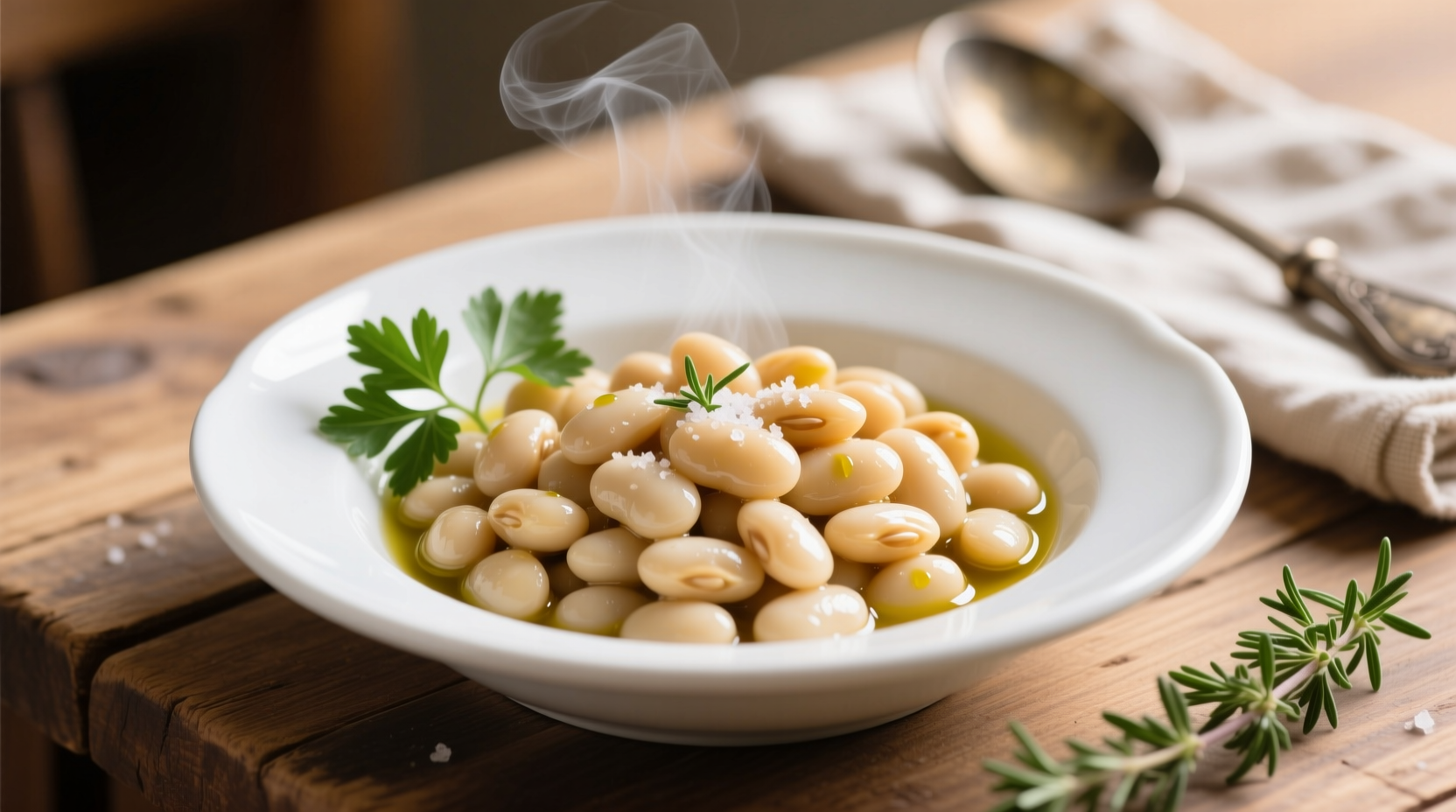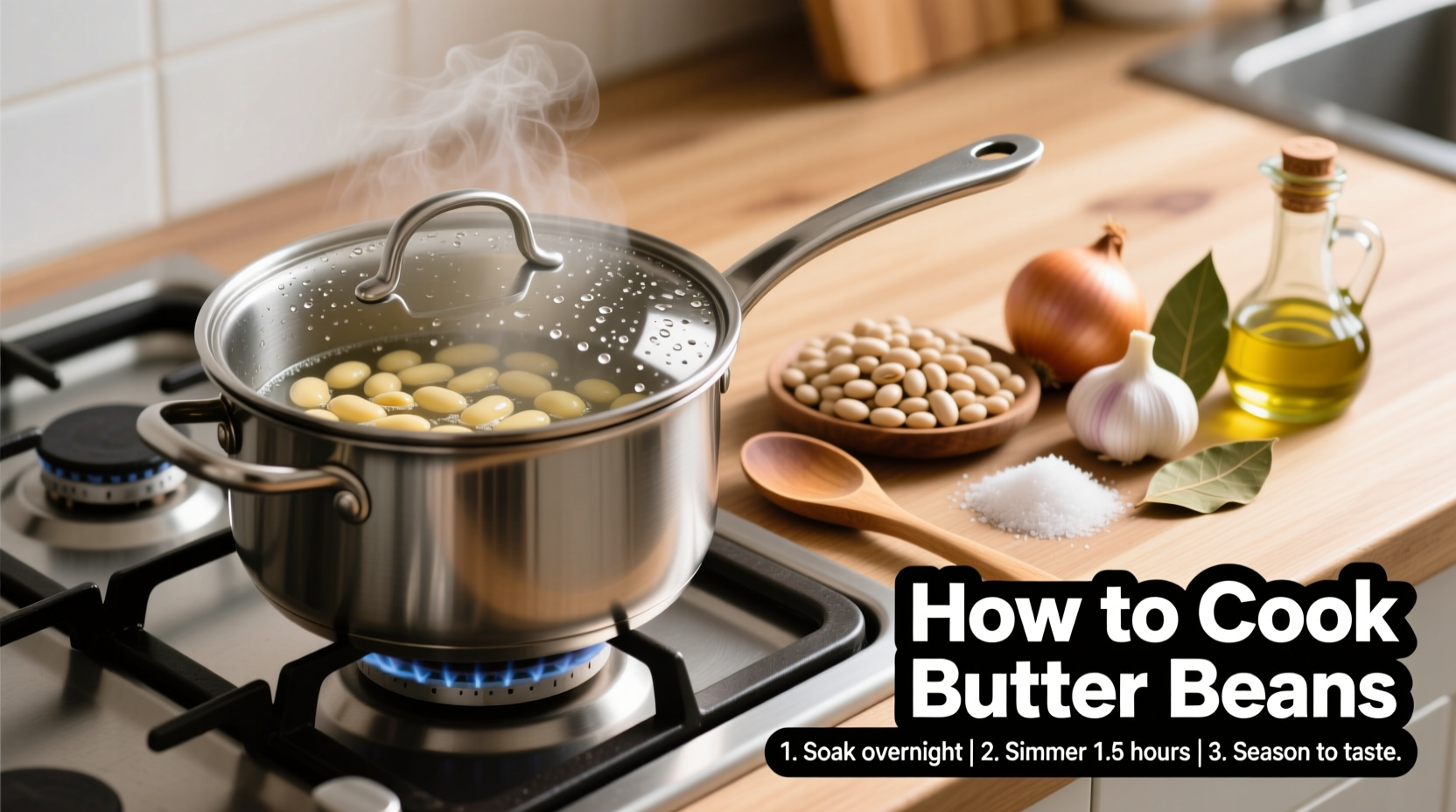Learn exactly how to cook butter beans with this comprehensive guide. Properly prepared dried butter beans require 8 hours of soaking followed by 45-60 minutes of simmering until tender. This complete guide covers stovetop, slow cooker, and Instant Pot methods with professional chef tips for perfect results every time.
Butter beans, also known as lima beans, transform from hard dried legumes into creamy, delicate treasures with the right cooking technique. Whether you're using dried beans for maximum flavor or convenient canned options, this guide provides everything you need for restaurant-quality results in your home kitchen.
What Are Butter Beans and Why They're Worth Cooking
Butter beans (Phaseolus lunatus) are large, flat ivory-colored beans with a naturally buttery texture and mild flavor. According to the USDA FoodData Central, one cup of cooked butter beans delivers 15 grams of protein, 13 grams of fiber, and significant amounts of iron, magnesium, and folate. Unlike many legumes, they cook relatively quickly and maintain their shape well during preparation.
| Preparation Method | Soaking Time | Cooking Time | Texture Result |
|---|---|---|---|
| Traditional Soak | 8 hours | 45-60 minutes | Creamy, intact |
| Quick Soak | 1 hour | 60-75 minutes | Slightly less uniform |
| No-Soak | None | 90-120 minutes | Less consistent |
Essential Preparation Steps for Perfect Butter Beans
Before cooking, proper preparation ensures even cooking and optimal texture. Always sort through dried beans to remove any stones or debris, then rinse thoroughly under cold water.
Soaking Methods Compared
The traditional overnight soak remains the gold standard for butter beans. Cover sorted beans with 3 inches of cold water and let sit at room temperature for 8 hours. This allows for even water absorption, reducing cooking time and preventing split skins.
For time-pressed cooks, the quick soak method works acceptably: Place beans in a pot, cover with 2 inches of water, bring to a boil for 2 minutes, then remove from heat, cover, and let stand for 1 hour. While convenient, this method yields slightly less uniform results according to culinary research from the National Center for Home Food Preservation.

Stovetop Cooking: The Classic Method
This traditional approach delivers the most control over the cooking process:
- Drain soaked beans and rinse under cold water
- Place in a heavy-bottomed pot with fresh water (3 cups water per 1 cup beans)
- Add 1 teaspoon salt (never add salt during soaking)
- Bring to a gentle simmer (not a rolling boil)
- Cover partially and cook 45-60 minutes until tender but not mushy
- Test for doneness every 10 minutes after 40 minutes
Professional chefs recommend adding acidic ingredients like tomatoes or vinegar only after beans are fully tender, as acidity prevents softening. For enhanced flavor, replace water with vegetable or chicken broth during cooking.
Alternative Cooking Methods
Slow Cooker Method
For hands-off cooking: After soaking, place beans in slow cooker with 4 cups water per 1 cup beans. Cook on low for 6-8 hours. The slow, gentle heat produces exceptionally creamy beans ideal for soups and stews.
Instant Pot Method
For fastest results: Use quick-soaked beans with 2.5 cups water per 1 cup beans. Cook on high pressure for 25 minutes with 15 minutes natural release. This method reduces cooking time by 60% while maintaining excellent texture.
Flavor Pairing Guide
Butter beans' mild flavor makes them incredibly versatile. For classic Southern preparation, cook with smoked ham hock, onion, and bay leaf. Mediterranean versions shine with garlic, rosemary, and lemon zest. For international flair, try with coconut milk and curry spices.
Seasoning timing matters: Add delicate herbs like parsley in the last 10 minutes, while robust flavors like smoked paprika can go in at the beginning. A splash of apple cider vinegar added after cooking brightens the flavor profile beautifully.
Troubleshooting Common Issues
Problem: Beans remain hard after cooking
Solution: Older beans (over 1 year) often resist softening. Try adding 1/4 teaspoon baking soda to soaking water, but use sparingly as too much creates mushiness.
Problem: Beans become mushy
Solution: Overcooking or adding salt too early causes this. Always add salt after beans have softened, and check for doneness frequently toward the end of cooking time.
Problem: Bland flavor
Solution: Cook beans with aromatic vegetables (onion, celery, carrot) and herbs. Finish with a drizzle of high-quality olive oil and flaky sea salt.
Storage and Usage Tips
Cooked butter beans keep well in the refrigerator for up to 5 days. For longer storage, freeze in cooking liquid in airtight containers for up to 6 months. Never drain beans before freezing, as the liquid protects their texture.
Leftover cooked butter beans work beautifully in salads, soups, or pureed into creamy dips. For a quick meal, toss warm beans with olive oil, lemon juice, chopped herbs, and crumbled feta cheese.











 浙公网安备
33010002000092号
浙公网安备
33010002000092号 浙B2-20120091-4
浙B2-20120091-4